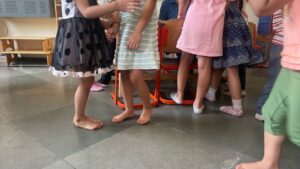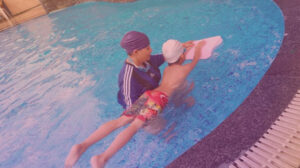HOW SENSES ARE AFFECTING AUTISTIC CHILDREN
Five important senses in our body are vision, hearing, smell, touch and taste also vestibular. These all together give programmed and meaningful associations for performing our daily routine. This processing of various senses altogether to generate a complete task is called sensory processing.

Sensory processing is an automatic phenomenon. It can take in information like touch, movement, smell, taste, vision and hearing. They organise and interpret the information and make a meaningful response.
SENSORY PROCESSING DISORDER
Sensory processing disorder is subdivided into three different types-
- Sensory modulation disorder – In this children might feel difficulty in regulating responses to sensory stimuli. Your children might respond too much or have a delay before responding to a stimulus.
- Sensory discrimination disorder- In this disorder, children undergo difficulty in identifying objects, places, people or other environments. In this type of disorder, your child will have difficulty in determining characteristic of sensory stimuli that is heard, seen, felt in the skin and experienced through the body, muscles and joints.

- Sensory-based motor disorder- In this difficulty with balance, motor coordination, and the skill performance might be got disturbed. In this type, postural disorder or dyspraxia{ difficulty thinking of, planning and executing \movement} might take place.
SENSORY INTEGRATION THERAPY
- This therapy focuses on the vestibular and proprioceptive systems.
- This therapy helps the children to normalize their reaction to touch.
- It helps them to become better aware of their body in space.
- It helps to improve their ability to manage their bodies like to focus, run, jump, sit and listen.
TACTILE DYSFUNCTION Touch sensitivity is commonly reported by children who experience sensory processing differences. It is a term which is used to describe “hypersensitive to touch”. Individuals who are sensitive to touch may respond by avoiding sensations or having a bigger reaction than expected.

Signs of tactile dysfunction:
- Children are fearful of light or unexpected touch.
- They don’t like to be held or cuddled.
- They might arch back, cry and pull away.
- They can be distressed when the diaper is changed.
- They may be frightened when touched from the back.
Hyposensitivity to touch[ Under responsive]:
- This kind of child wants to touch everything and everyone.
- They are not bothered by injuries like bruises and cuts.
- They are not aware of dirtiness or feel his nose running.
- They are self-abusive like they bit themselves or pinch, etc.
POOR TACTILE PERCEPTION:
- They got difficulty in fine motor tasks such as buttoning, zipping, etc.
- They are not able to identify which part of their body was touched if not looking.
- Might be afraid of the dark.
- Children got a difficulty using scissors, crayons or any academic work.

SIGNS OF VESTIBULAR DYSFUNCTION: Some children are hypersensitive to movement and some are hypersensitive to movement. In hypersensitive children:
- They avoid playground activities.
- Your children avoid elevators or escalators.
- They are terrified of falling when there is no risk.
- They prefer tasks.
In hypersensitive children:
- They can’t seem to sit still.
- They experience intense movements.
- They love tossed in the air.
- They always jumping on furniture.
SIGNS OF AUDITORY DYSFUNCTION- Auditory processing disorder isn’t hearing loss or a learning loss. It means your brain doesn’t “hear” sounds in the usual way. It is not a problem with understanding meaning. In children who are hypersensitive to sound:
- They got distracted by sounds like refrigerators, fans, and heaters.
- They are fearful of the sound of flushing.
- They are distracted by loud or unexpected sounds.
- They got distracted by background environmental sounds.
In children with hypersensitive to sound:
- They don’t respond to being called by name and love loud music.
- They got confused about where the sound is coming from and appeared to make noise for noise’s sake.
- Difficulty understanding or remembering what is said.
- Indifference to pain and extreme temperature.
SOCIAL DYSFUNCTION-In social dysfunction, they prefer playing by themselves with toys, objects, etc. They are self-abusive or abusive to others. They are hard to have a meaningful two-way conversation.
EMOTIONAL DYSFUNCTION – Children got difficulty accepting changes in routine got easily frustrated, are impulsive, and function best in small groups. They avoid eye contact and quickly change moods.

PLAY DYSFUNCTION-Difficulty in playing independently and participating in repetitive play for hours.
SENSORY ROOM
A specific room, with specific sensory equipment and activities, to benefit specific sensory processing difficulties. The room must be tailored specifically to sensory needs. They have controllable light sources and light therapy. Most importantly make sure there is absolutely no fluorescent light.

A child with sensory needs requires a scientific environment to learn and execute his functions. There is a need for a multidimensional approach to address their problems. Blossoms physiotherapy and child rehabilitation are one of the place best places in Panchkula and dhakoli comprising all the professionals under one roof. We are having the best team of occupational therapists/paediatric physiotherapy, speech therapy, special education, group therapy expert, clinical psychology, neurologist and behavioural expert. To get diagnosed with sensory problems in your children, log on to blossomsphysiotherapy.



